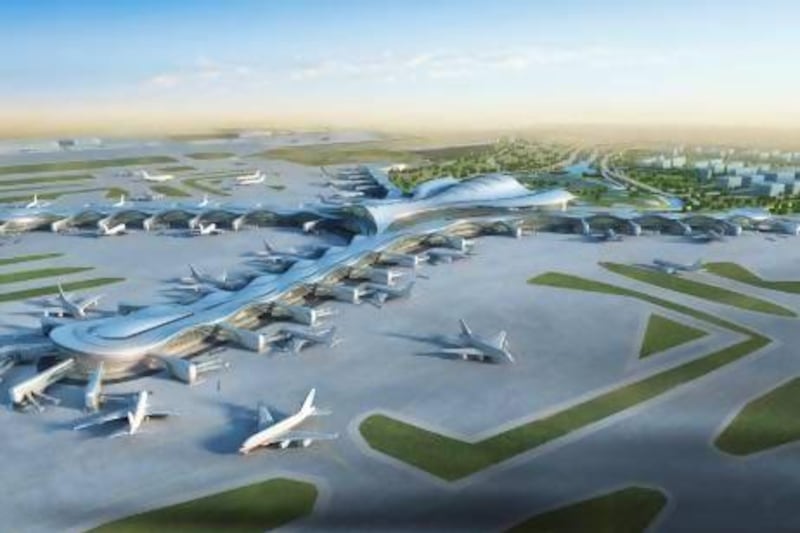Abu Dhabi plans to more than triple passenger capacity with a new airport terminal, banking on luxury travel and growth of the flag carrier Etihad Airways to provide demand.
The Midfield Terminal under construction at Abu Dhabi International Airport, with a total floor area exceeding the Pentagon and maximum capacity of 40 million passengers, is due to open in late 2017. The facility, among the world's biggest single-capacity buildings, will be home to Etihad and its partner airlines.
Dubai and Doha in Qatar are also expanding capacity at their airports and Istanbul is building an aerodrome that will be among the world's largest. Abu Dhabi's airport served 14.7 million passengers in 2012, compared with almost 58 million in Dubai.
Abu Dhabi Airport chief executive Tony Douglas said he is not concerned that there was too much capacity in the region.
"All three locations are six hours away from two-thirds of world's population," Mr Douglas said in a July 30 interview with Bloomberg at the construction site. "There are 100 capital cities within six hours of where we are."
"Am I concerned that when we open this we'll see tumbleweed blowing along the runways, empty departure halls and an aircraft control tower with everyone reading the newspaper? No, no and no," Mr Douglas said. "We can't get it open a minute soon enough."
The airport is preparing to put out a tender for the mechanical and electrical package of the terminal building within two to three weeks, Mr Douglas said. The airfield has also provisioned for a metro connection in the future.
Last year, it awarded a Dh10.8 billion contract for the construction of the terminal building to a joint venture of Arabtec Holding, TAV Construction and Consolidated Contractors.
The airport, which is owned by the Government and funded by the Department of Finance, will not be looking at bond or sukuk issues to finance the project, Mr Douglas said.
Designed by Kohn Pedersen Fox Associates, the terminal will include a hotel and museum as well as shops, restaurants and airline lounges. Mr Douglas, who used to run Heathrow airport in London, Europe's busiest, said the building's luxurious style will emulate the five-star Emirates Palace Hotel in Abu Dhabi.
Abu Dhabi's economy, which is more than twice the size of Dubai's, expanded 5.6 per cent last year compared with 4.4 per cent in Dubai, according to government data.
The emirate said in January it would spend Dh330 billion to fund development projects over five years.
Much of the airport's growth is linked to expansion of Etihad, which aims to grow into a fleet of 159 aircraft by 2020, more than twice as many as now. Transit makes up 70 per cent of Etihad's total passengers.
"The airlines are growing so quickly we can hardly keep up with the infrastructure," Mr Douglas said. "It's the type of problem that every airport operator dreams of."
Etihad's network of equity partners includes Air Berlin, Virgin Australia, Air Seychelles and Aer Lingus. The airline also said it will take a 49 per cent stake in Serbia's Jat Airways and is awaiting to complete a deal for a 24 per cent holding in India's Jet Airways.
Mr Douglas took his post in March, after a three-year stint as CEO at Abu Dhabi Ports Company. Hiring UK-born Douglas continues a tradition among Middle East aviation companies to rely on Anglo-Saxon executives to lead an expansion. Emirates is run by President Tim Clark, and Etihad CEO is James Hogan, while Dubai's airport is run by Paul Griffiths, the former CEO of Gatwick Airport, London's second-busiest hub.





